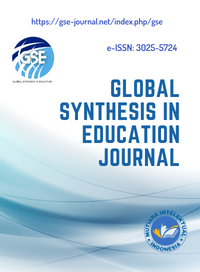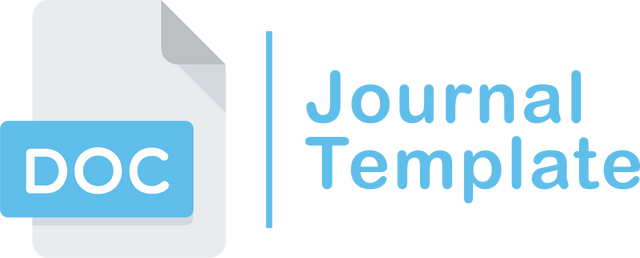EXPLORING THE BENEFITS OF MULTIMODAL LITERACY IN ENGLISH TEACHING: ENGAGING STUDENTS THROUGH VISUAL, AUDITORY, AND DIGITAL MODES
DOI:
https://doi.org/10.61667/xh184f41Keywords:
Multimodal literacy , English teaching practices , Student engagement, Learning outcomes , Digital technologiesAbstract
This research paper investigates the benefits of integrating multimodal literacy into English teaching practices. Multimodal literacy refers to the ability to comprehend and create meaning using multiple modes of communication, such as visuals, auditory elements, and digital technologies. The study aims to explore how incorporating multimodal approaches can enhance student engagement and learning outcomes in English classrooms. Drawing on recent research and educational theories, this paper examines the theoretical underpinnings of multimodal literacy and its potential impact on language acquisition. The research employs a qualitative approach, including classroom observations, interviews, and student feedback, to gather data and provide insights into the effectiveness of multimodal literacy strategies. The findings contribute to the understanding of innovative teaching practices that promote student engagement, critical thinking, and communication skills in English language learning contexts.
References
Agustiningrum, T., & Sutrisno, D. (2023). THE EFFECTIVENESS OF USING SCRABBLE GAME ON VOCABULARY FOR 7TH GRADE STUDENTS OF SMP NURUL IMAN LAMPUNG TIMUR. Global Synthesis in Education ….
Ahmad, A. Q., Jawad, M. A., & Jaber, K. M. (2022). E-learning issues and solutions for students with disabilities during COVID-19 pandemic: Al-Zaytoonah University of Jordan case study. In … of Evaluation and Research in …. academia.edu.
Araújo, S. (2021). Multimodal science communication: From documentary research to infographic via mind mapping. CEUR Workshop Proceedings, 2936, 2233–2236.
Aşık, A. (2022). Digital Storytelling: An Alternative Method and a Multimodal Task to Improve Writing Skill of English Language Learners. English Language Education, 30, 69–80. https://doi.org/10.1007/978-3-031-13540-8_4
Bonsignori, V. (2022). Developing strategies for conceptual accessibility through multimodal literacy in the English for tourism classroom. Multimodal Communication, 11(1), 31–47. https://doi.org/10.1515/mc-2020-0026
Capone, R. (2018). E-teaching in mathematics education: The teacher’s role in online discussion. Journal of E-Learning and Knowledge Society, 14(3), 41–51. https://doi.org/10.20368/1971-8829/1538
Caroy, A. A. (2023). A Technology Report on Nearpod. RELC Journal. https://doi.org/10.1177/00336882231153669
Chen, W. C. (2021). Instructional Design and Practice for News English. Taiwan International ESP Journal, 12(1), 65–88. https://doi.org/10.6706/TIESPJ.202106_12(1).0004
Chetty, N. D. S., Handayani, L., Sahabudin, N. A., Ali, Z., & ... (2019). Learning Styles and Teaching Styles Determine Students’ Academic Performances. … Evaluation and Research ….
Ching, Y. H. (2018). Developing online teaching expertise: An analysis of prospective online instructors’ reflections. Journal of Interactive Learning Research, 29(2), 145–167.
Cumming-Potvin, W. (2022). Aboriginal perspectives matter: Yarning and reflecting about teaching literacies with multimodal Aboriginal texts. Issues in Educational Research, 32(4), 1342–1363.
Eisenmann, M. (2019). “To be or not to be digital” - Shakespeare 2.0. Culture and Literature in the EFL Classroom: Bridging the Gap between Theory and Practice, 87–107.
Harvey, M. (2020). “To Be, or Not to Be”: Modernizing Shakespeare With Multimodal Learning Stations. Journal of Adolescent and Adult Literacy, 63(5), 559–568. https://doi.org/10.1002/jaal.1023
Hermawanto, K. N., Sutrisno, D., & ... (2023). The Effectiveness of TOEFL Preparation Course on Master of Management Education Students’ TOEFL Scores. … Synthesis in Education ….
Hu, R. (2021). Multimodal teaching strategy of college english based on computer technology. ACM International Conference Proceeding Series, 227–230. https://doi.org/10.1145/3482632.3482679
Huang, S. y. (2019). A critical multimodal framework for reading and analyzing pedagogical materials. English Teaching, 18(1), 52–69. https://doi.org/10.1108/ETPC-08-2018-0078
Kao, Y. T. (2022). Understanding and addressing the challenges of teaching an online CLIL course: a teacher education study. International Journal of Bilingual Education and Bilingualism, 25(2), 656–675. https://doi.org/10.1080/13670050.2020.1713723
Kuby, C. R. (2019). Teaching and Learning Literacy in Early Childhood Education: Crossroads and Intersections. The Wiley Handbook of Early Childhood Care and Education, 301–328. https://doi.org/10.1002/9781119148104.ch14
Lim, F. V. (2022). Thinking and Talking About Digital News in the Singapore Secondary English Classroom: a Pilot Study. English Teaching and Learning. https://doi.org/10.1007/s42321-022-00134-5
Maia, A. A. d. M. (2022). English Language Teacher Education and the Multiliteracies Pedagogy: Constructing Complex Professional Knowledge and Identities. RELC Journal, 53(3), 657–671. https://doi.org/10.1177/0033688220954909
Marlatt, R. (2021). Literacies to grow and teach: Cultivating a spirit of inquiry through multimodal text sets. Advances in Research on Teaching, 36, 143–156. https://doi.org/10.1108/S1479-368720210000036013
Nagy, N. (2020a). Addressing Controversy: Changing Pre-Service Teachers’ Gazes Through an Exhibition Visit. Journal of Museum Education, 45(3), 273–287. https://doi.org/10.1080/10598650.2020.1763673
Nagy, N. (2020b). Multimodal literacy development in a higher education English Studies classroom. Journal of Visual Literacy, 39(3), 167–184. https://doi.org/10.1080/1051144X.2020.1826218
Nash, B. L. (2022). A Culturally Sustaining Approach to Multimodal Literacies: Building from Students’ Funds of Knowledge in Field-Based Teacher Education. Literacy Research and Instruction. https://doi.org/10.1080/19388071.2022.2153766
Nurjanah, A., & Sutrisno, D. (2023). The Relationship between English Movie Watching Habits and Vocabulary Mastery among Students at a Private University. Global Synthesis in Education Journal.
Saito, R. T. (2021). Webcurriculum designs, and decolonialities indevir: Digital resources as tools for teaching and learning practices. Ilha Do Desterro, 74(3), 393–413. https://doi.org/10.5007/2175-8026.2021.E80728
Schöninger, C. L. K. (2020). Literacy and multimodality in english teaching: Practices in technical and technological courses. Diacritica, 34(1), 58–69. https://doi.org/10.21814/diacritica.267
Schucker, K. (2022). Exploring engineering habits of mind and disciplinary literacy connections in an elementary afterschool engineering literacies club. Pedagogies. https://doi.org/10.1080/1554480X.2022.2134871
Sefriani, R., Sepriana, R., Wijaya, I., & Radyuli, P. (2021). Blended Learning with Edmodo: The Effectiveness of Statistical Learning during the COVID-19 Pandemic. … of Evaluation and Research in ….
So, H. J. (2019). Co-designing multimodal pedagogical content knowledge with Indonesian teachers. ICCE 2019 - 27th International Conference on Computers in Education, Proceedings, 1, 720–728.
Stankić, D. L. P. (2022). INCORPORATING MULTILITERACIES AND MULTIMODALITY INTO LITERACY INSTRUCTION FOR EFL STUDENTS AT TERTIARY LEVEL: A CASE STUDY. Filolog (Banja Luka), 13(25), 68–85. https://doi.org/10.21618/fil2225068p
Sun, L. (2021). Transforming pre-service EFL teacher education through critical cosmopolitan literacies: voices from Mainland China. Teaching in Higher Education. https://doi.org/10.1080/13562517.2021.2015753
Sutrisno, D. (2022a). Fostering student’s critical reading through technology integrated instruction. Teaching English as a Foreign Language Journal, 1(2), 125–134.
Sutrisno, D. (2022b). Fostering student’s critical reading through technology integrated instruction. Teaching English as a Foreign Language Journal, 1(2), 125–134.
Takaki, N. H. (2019). Towards translanguaging with students at public school: Multimodal and transcultural aspects in meaning making. Calidoscopio, 17(1), 163–183. https://doi.org/10.4013/cld.2019.171.09
Vlachopoulos, D. (2021). Quality Teaching in Online Higher Education: The Perspectives of 250 Online Tutors on Technology and Pedagogy. International Journal of Emerging Technologies in Learning, 16(6), 40–56. https://doi.org/10.3991/ijet.v16i06.20173
Wang, R. (2019). Massive open online course platform blended english teaching method based on model-view-controller framework. International Journal of Emerging Technologies in Learning, 14(16), 188–196. https://doi.org/10.3991/ijet.v14i16.11151
Zhang, E. D. (2022). Implementing digital multimodal composing in L2 writing instruction: a focus on developing L2 student writers. Innovation in Language Learning and Teaching. https://doi.org/10.1080/17501229.2022.2135712
Zhang, X. (2021). Revisiting Computer-Assisted Language Teaching: What Else Do Tertiary-Level EFL Teachers Need to Know? International Journal of Emerging Technologies in Learning, 16(15), 226–235. https://doi.org/10.3991/ijet.v16i15.21815
Downloads
Published
Issue
Section
License
Copyright (c) 2024 Global Synthesis in Education Journal

This work is licensed under a Creative Commons Attribution-NonCommercial-ShareAlike 4.0 International License.




















